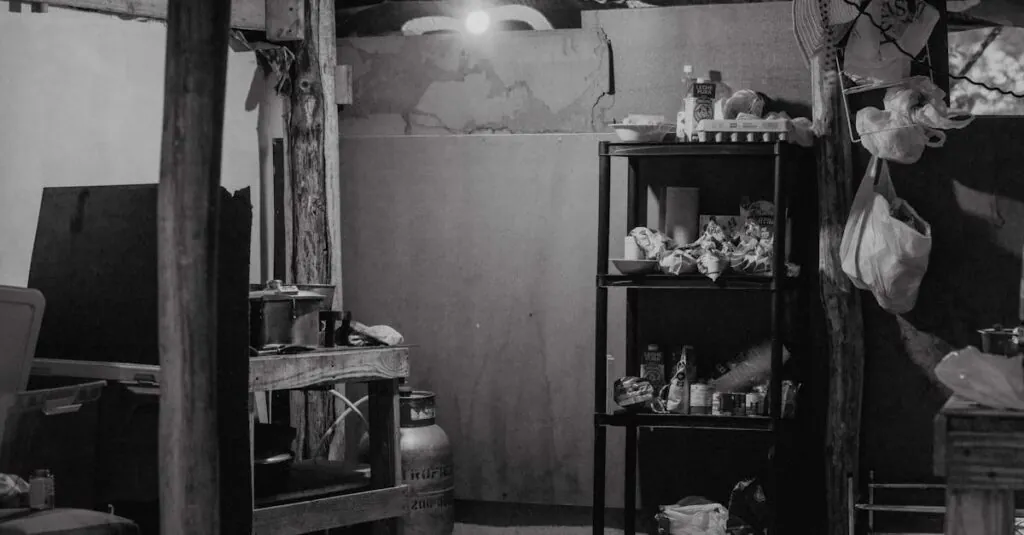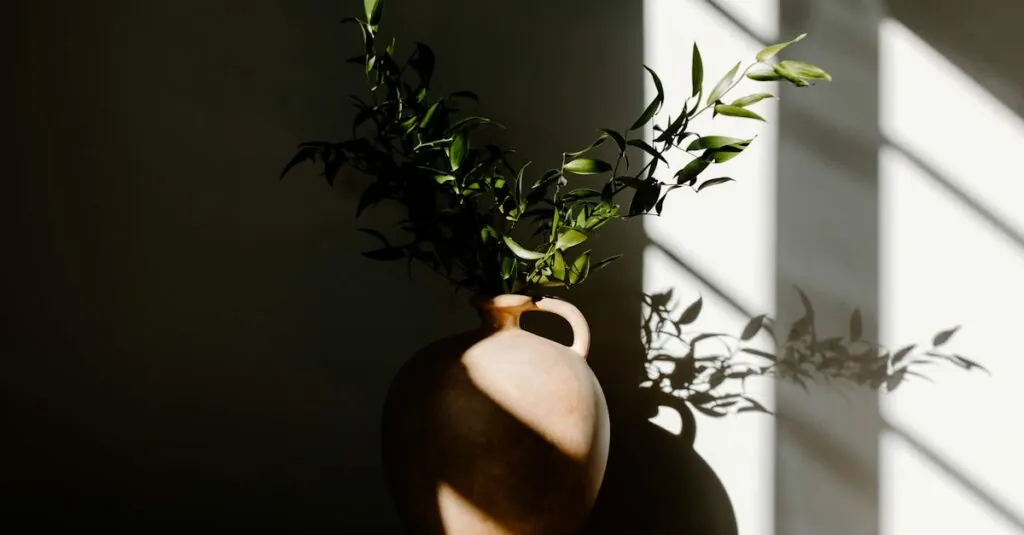Table of Contents
ToggleStep into the world of traditional living rooms, where charm meets comfort and every corner tells a story. These spaces aren’t just about style; they’re a warm embrace of nostalgia, inviting family and friends to gather and create lasting memories. Imagine sinking into plush sofas, surrounded by rich wood accents and heirloom decor that whispers tales of yesteryear.
In a fast-paced world filled with sleek lines and minimalist designs, traditional living rooms offer a delightful escape. They blend elegance with a touch of whimsy, reminding us that sometimes, the best things in life come with a bit of character. Whether it’s a cozy reading nook or a grand fireplace, these living rooms invite you to kick off your shoes, grab a cup of tea, and relish in the beauty of simplicity.
Understanding Traditional Living Rooms
Traditional living rooms exude charm with their warm and inviting designs. These spaces often serve as a backdrop for family gatherings and conversations.
Definition and Characteristics
A traditional living room typically showcases classic decor and comfort. Key elements include plush sofas, rich wood accents, and intricate detailing. Fabrics like velvet and linen often adorn furniture, contributing to the inviting atmosphere. Color palettes consist of warm tones such as deep reds and browns, enhancing the cozy feel. Decorative accessories like floral arrangements and family portraits add personalization. Each component, from furniture to colors, works harmoniously to create a sense of nostalgia.
Historical Context
Historical roots of traditional living rooms can be traced back to various architectural styles. Influences from Victorian and Colonial eras shaped their design, reflecting the values of craftsmanship and comfort. In the 18th and 19th centuries, these spaces became central to social gatherings and family life. Interior design emphasized symmetry and balance, creating a structured yet welcoming environment. As trends evolved, the essence of traditional living rooms remained, representing a longing for familiarity and stability. These historical elements continue to resonate in contemporary designs, embodying a blend of the old and the cherished.
Key Elements of Traditional Living Rooms
Traditional living rooms incorporate specific design elements that highlight their charm and comfort. These include furniture styles, color palettes, and textiles that enhance their inviting atmosphere.
Furniture Styles
Furniture styles play a crucial role in defining traditional living rooms. Plush sofas often feature rich upholstery, while graceful wingback chairs add elegance. A classic coffee table, typically made of wood, serves as a functional centerpiece. Additionally, furniture arrangements prioritize comfort and conversation, encouraging gatherings. Decorative cabinets or bookshelves display cherished items, reinforcing personal stories. Antique pieces often add character, blending history with modern comfort.
Color Palettes and Textiles
Color palettes in traditional living rooms evoke warmth and nostalgia. Deep reds, warm browns, and muted greens create a cozy backdrop. Soft fabrics like velvet or brocade enhance comfort and elegance. Drapes, characterized by rich patterns, frame windows beautifully. Throw pillows in varied textures add visual interest and comfort. Rugs, often featuring intricate designs, anchor the space while adding warmth underfoot. These elements combine to create an inviting, harmonious environment.
Decorating Ideas for Traditional Living Rooms
Traditional living rooms embrace elegance and comfort through thoughtful decor choices. Incorporating personal touches enhances their inviting atmosphere.
Incorporating Art and Accessories
Art and accessories play a significant role in traditional living rooms. Choose framed paintings, preferably landscapes or classic portraits, to adorn walls. Accessories like decorative vases or antique clocks add character to spaces. Utilizing family portraits showcases personal history, adding emotional depth to decor. Arranging items in groups creates a layered look, balancing visual interest. Position floral arrangements on coffee tables or sideboards for a splash of color and freshness. Textiles featuring intricate patterns also contribute to the decor’s richness, creating a sense of warmth and nostalgia.
Lighting Options and Fixtures
Lighting significantly influences the ambiance of traditional living rooms. Chandeliers often serve as stunning focal points, adding a touch of grandeur. Table lamps with fabric shades provide soft, inviting illumination. Accent lighting highlights artwork and accessories, enhancing their presence in the room. Incorporating wall sconces promotes symmetry, aligning with the aesthetic values of traditional designs. Dimmers allow for adjustable brightness, creating a cozy atmosphere suited for various occasions. Layering different lighting sources enhances depth, making spaces feel warm and welcoming for gatherings.
Benefits of Traditional Living Rooms
Traditional living rooms offer a timeless charm and a welcoming atmosphere that enhances family connections. These spaces create an inviting environment ideal for relaxation and socializing.
Aesthetic Appeal
Classic decor defines the aesthetic of traditional living rooms. Rich wood accents, ornate detailing, and plush upholstery contribute to their elegance. Warm color palettes featuring deep reds and browns evoke a sense of nostalgia. Decorative accessories like floral arrangements and family portraits add personal touches. Intricate rugs and beautifully framed art amplify the visual interest, transforming the room into an inviting focal point.
Comfort and Functionality
Comfort ranks high in traditional living rooms, encouraging gatherings and relaxation. Plush sofas and wingback chairs provide ample seating while ensuring a cozy feel. Coffee tables serve as central gathering points, merging functionality with style. Flexible furniture arrangements promote conversation and connectivity among guests. Thoughtful lighting choices enhance ambiance, combining practicality with charm in everyday use. Each element works together to create a space suitable for both leisure and social interaction.
Traditional living rooms embody a timeless elegance that continues to captivate. Their inviting atmosphere fosters connection and warmth, making them ideal for family gatherings and social interactions. The blend of classic decor elements and personal touches creates spaces that resonate with history while remaining functional and comfortable.
As these rooms evolve alongside modern trends, they retain their charm and character. By embracing traditional design principles, one can cultivate an environment that not only reflects personal style but also honors the rich heritage of craftsmanship. The enduring appeal of traditional living rooms ensures they remain cherished spaces in homes for generations to come.




